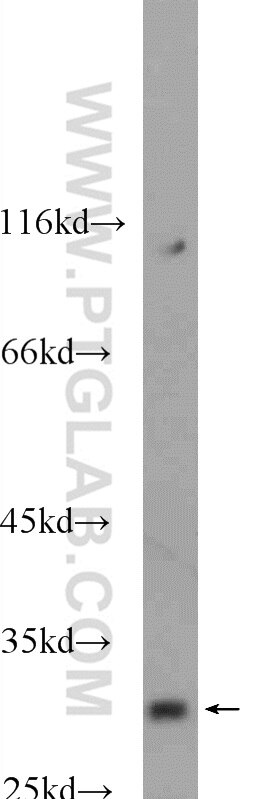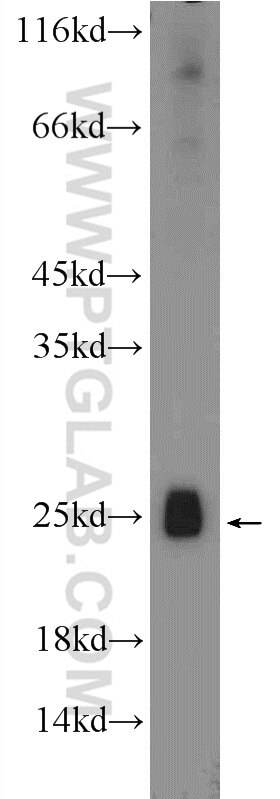SHOX Polyclonal antibody
SHOX Polyclonal Antibody for WB,ELISA
Host / Isotype
Rabbit / IgG
Reactivity
human, mouse
Applications
WB,ELISA
Conjugate
Unconjugated
Cat no : 25117-1-AP
Synonyms
Validation Data Gallery
Tested Applications
| Positive WB detected in | mouse brain tissue, fetal human brain tissue |
Recommended dilution
| Application | Dilution |
|---|---|
| Western Blot (WB) | WB : 1:500-1:2000 |
| It is recommended that this reagent should be titrated in each testing system to obtain optimal results. | |
| Sample-dependent, Check data in validation data gallery. | |
Product Information
The immunogen of 25117-1-AP is SHOX Fusion Protein expressed in E. coli.
| Tested Reactivity | human, mouse |
| Host / Isotype | Rabbit / IgG |
| Class | Polyclonal |
| Type | Antibody |
| Immunogen | SHOX fusion protein Ag18930 |
| Full Name | short stature homeobox |
| Calculated Molecular Weight | 292 aa, 32 kDa |
| Observed Molecular Weight | 25-32 kDa |
| GenBank Accession Number | BC148783 |
| Gene Symbol | SHOX |
| Gene ID (NCBI) | 6473 |
| RRID | AB_2879905 |
| Conjugate | Unconjugated |
| Form | Liquid |
| Purification Method | Antigen affinity purification |
| Storage Buffer | PBS with 0.02% sodium azide and 50% glycerol pH 7.3. |
| Storage Conditions | Store at -20°C. Stable for one year after shipment. Aliquoting is unnecessary for -20oC storage. 20ul sizes contain 0.1% BSA. |
Background Information
Short stature homeobox protein (SHOX), also named as GCFX, is a 292 amino acid protein, which contains one homeobox DNA-binding domain and belongs to the paired homeobox family. SHOX. SHOX controls fundamental aspects of growth and development. SHOX undergoes splicing resulting in two isoforms, SHOXA and SHOXB. SHOXA is a 32 kDa protein and is expressed in skeletal muscle, placental, pancreas, heart and bone marrow fibroblast and, to a lesser extent, in kidney and lung. SHOXB is 25 kDa protein and is highly expressed in osteogenic cells, but not expressed in brain, kidney, liver or lung.
Protocols
| Product Specific Protocols | |
|---|---|
| WB protocol for SHOX antibody 25117-1-AP | Download protocol |
| Standard Protocols | |
|---|---|
| Click here to view our Standard Protocols |



